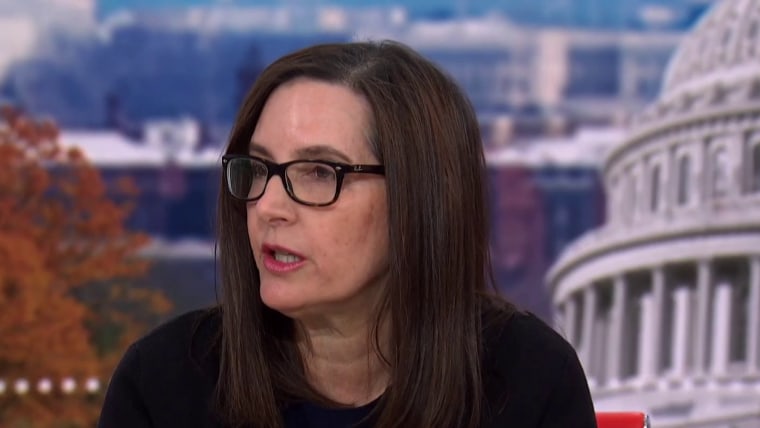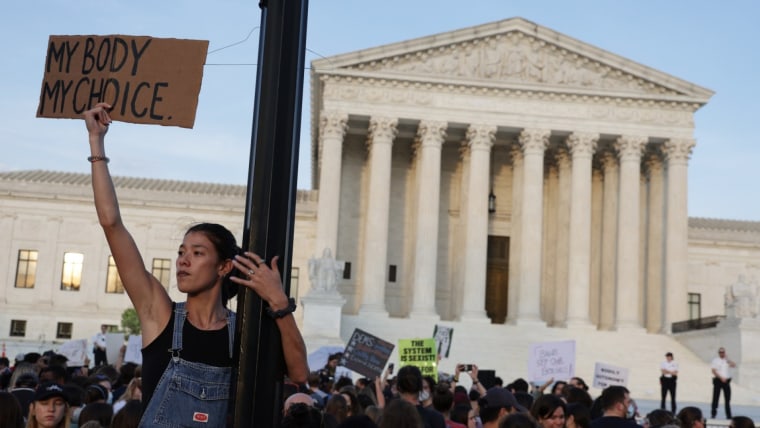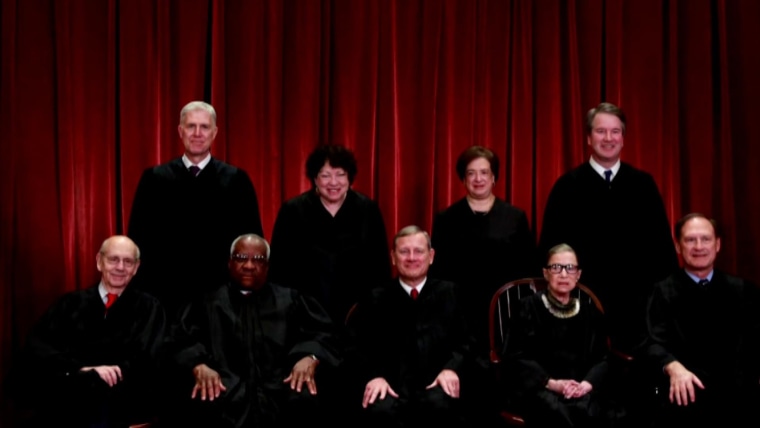The conservatives on the Supreme Court drastically outnumbered their liberal counterparts in 1992 when they heard Planned Parenthood of Southeastern Pennsylvania v. Casey. So when the decision in that case not only left Roe standing but also explicitly reaffirmed the right to choose to have an abortion, movement conservatives felt as though the football had been pulled away at the last second.
It’s a situation that the GOP’s anti-abortion wing never forgave.
It’s a situation that the GOP’s anti-abortion wing never forgave. Since then, lawyers, activists and elected officials have ensured that the odds have shrunk to nearly zero that Republican-appointed justices will again pass on a chance to kill off Roe. And with this week’s leak of a draft decision in Dobbs v. Jackson, a case designed to test Roe’s resilience, it would look as though they’ve finally succeeded where they failed 30 years ago.
Before Casey was argued, the court announced that it would focus only on the provisions of the Pennsylvania law being challenged, not Roe itself. But when the initial vote produced five justices in favor of upholding Pennsylvania’s restrictions on abortion, Chief Justice William Rehnquist, who along with Justice Byron White had dissented in the 1973 Roe v. Wade decision, saw an opportunity to reverse what he saw as a misguided outcome. He wrote a draft of the majority opinion that would have undone Roe’s protections, though less explicitly than the leaked draft this week from Justice Samuel Alito.
But Rehnquist’s majority was a shaky one. He already had two overt defectors in his camp. Justice Sandra Day O’Connor took issue with a provision in Pennsylvania’s law that required a woman to inform her husband before having an abortion. Justice David Souter, assumed to be a stalwart conservative, surprised his colleagues when he insisted that Roe be upheld. Anthony Kennedy had both expressed personal distaste for abortion and joined White, Rehnquist, Antonin Scalia and Clarence Thomas in voting to uphold Pennsylvania’s law — but it turns out he wasn’t ready to undo Roe entirely.
Souter and O’Connor managed to recruit Kennedy to their side, and together the three pulled together a draft that left most of Pennsylvania’s law in place. It also cemented O’Connor’s “undue burden” standard, which provided states the ability to limit access to abortions without outright banning the procedure. But the trio’s draft axed the spousal notification requirement and, importantly, stated “that the essential holding of Roe v. Wade should be retained and once again reaffirmed.”
The two liberal justices, John Paul Stevens and Harry Blackmun, the latter of whom authored the decision in Roe, were stunned. Stevens revealed in his memoir that he sent a letter to the three authors “congratulating them on a fine piece of work.” He then suggested that they bump the criticism of past cases to the end of their draft, so he and Blackmun could join the first part. They agreed, giving that part of the draft a majority that spoke for the court as a whole when it was released.
Republican presidents had nominated eight of the nine justices. How could three of them write this decision?
This threading of the needle — allowing Roe to stand but affirming the right of states to limit access to abortion — was a political earthquake. “That battle is over,” the Los Angeles Times quoted one justice as saying at the time of Roe’s new lease on life. “It will never be overturned now.”
The right took it as a betrayal. Republican presidents had nominated eight of the nine justices. How could three of them write this decision? No less than Ronald Reagan himself had put O’Connor and Kennedy on the court, the latter after Judge Robert Bork was blocked for his beliefs about privacy rights; George H.W. Bush had named Souter to the court.
“The three tend to be cautious, fact-bound judges who decide cases based on their practical effects rather than some lofty, dispassionate doctrine,” Bob Cohn wrote in Newsweek soon after Casey was decided. “A former Reagan domestic-policy aide, Gary Bauer, calls them the ‘wimp bloc.’ Movement conservatives assail Kennedy the most for leaving the ideological homestead.”
The Federalist Society, a group of conservative law students and legal scholars founded in 1982, has become a pipeline for the right to fill the federal bench with conservatives cut from the same cloth as Thomas and Scalia. The society was still getting started when Kennedy and Souter were appointed, but by the time George W. Bush had taken office, with an assist from Federalist Society lawyers in arguing Bush v. Gore, it had hit its stride.
As Judge William Pryor put it in a 2000 speech to the society: “I will end with my prayer for the next administration: Please, God, no more Souters.”
Alito was one of the biggest beneficiaries of the Federalist Society’s concerted attempt to reshape the federal judiciary. He was nominated to the Supreme Court after the right objected to Harriet Miers, George W. Bush’s pick to replace the retiring O’Connor. Though he had tried to undermine Roe in his opinion in Casey while serving on the 3rd U.S. Circuit Court of Appeals, he still managed to convince enough “moderate” Republican senators that he would leave Roe in place.
The odds that one of Trump’s appointees will join an opinion alongside Roberts and the three liberal justices in Dobbs feel slim at best.
All three of President Donald Trump’s choices during his term were drawn from lists curated with input from the Federalist Society, especially its executive vice president, Leonard Leo. The Atlantic reported in 2020 that in his interviews with them, Trump “specifically asked potential Supreme Court nominees why they think past justices have shifted to the left” to weed out any similar behavior from future justices.
Chief Justice John Roberts, though a Federalist Society member himself, is the only conservative so far reported to be against overturning Roe in Dobbs v. Jackson. He is still in favor of leaving Mississippi’s ban on abortions after 15 weeks, a compromise that he floated during oral arguments in December. (Neither party in the case saw that as a feasible possibility at the time.)
Still, there may be the same sort of behind-the-scenes effort to cobble together a coalition as happened with Casey that would somehow manage to save Roe. Among the many theories floating around is that the draft was leaked to help shore up any wavering justices who’d initially voted with the majority.
When the news of the draft first emerged, I looked to examples like Casey and Obamacare’s last-minute reprieve for hope that the court might have another surprise in store. But the Federalist Society has done everything in its power to prevent exactly that. The odds that one of Trump’s appointees will join an opinion alongside Roberts and the three liberal justices in Dobbs feel slim at best. There’s just no room for surprises in the world that the Federalist Society has built.



